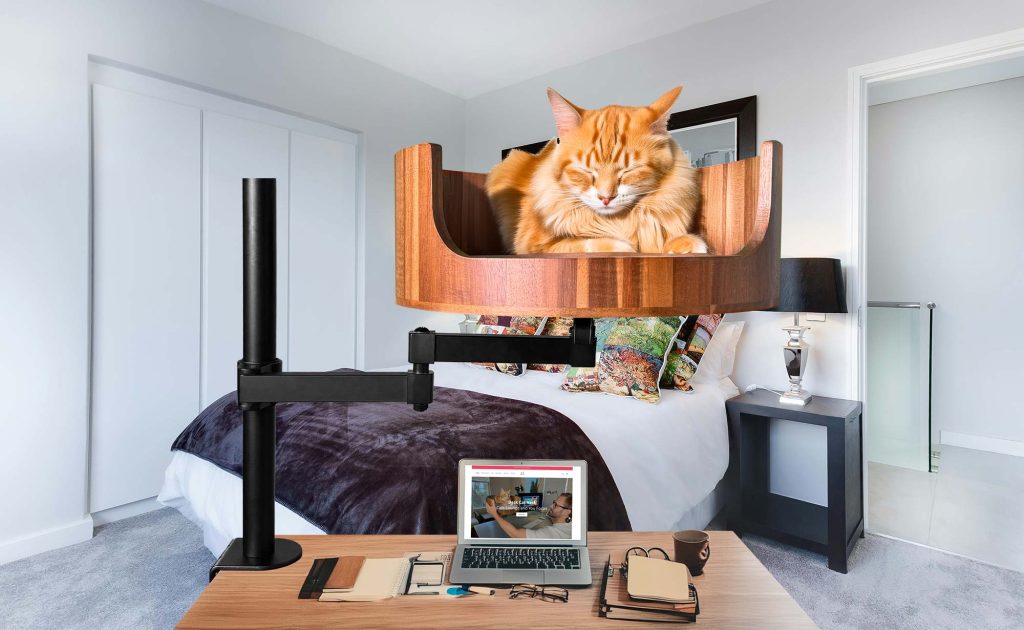Have you ever noticed your cat wagging its tail and wondered what it might mean? Cats communicate in many ways, and their tails play a crucial role in expressing their emotions. In this article, we will delve into the fascinating world of feline emotions and explore the different meanings behind cats wagging their tails.
Understanding feline behavior can be a complex and intriguing endeavor. Cats use their tails to convey a wide range of emotions, from happiness and excitement to fear and aggression. By observing the subtle movements of your cat’s tail, you can gain valuable insights into their mood and feelings. We will discuss the various types of tail wags, including the slow swish, the rapid flick, and the puffed-up tail, and decode what each one signifies. Additionally, we will explore how to interpret other body language cues in conjunction with tail movements to decipher the full range of emotions your cat may be experiencing. Join us on this enlightening journey into the world of cats wagging tails, and gain a deeper understanding of your feline companion.
1. Cats wag their tails as a way of communicating their emotions, not just to display aggression.
2. Understanding the context in which a cat is wagging its tail is crucial to deciphering its emotions accurately.
3. Slow, fluid tail movements indicate contentment, while quick and abrupt movements may signal agitation or arousal.
4. Observing other body language cues in conjunction with tail movements can provide a more comprehensive understanding of a cat’s emotional state.
5. Building a strong bond with your cat through regular interaction and attentive observation can help strengthen your ability to interpret its tail movements and overall emotions effectively.
The Importance of Cat Tails
Cat tails can provide valuable insights into a feline’s emotions and behaviors. Cats use their tails as a form of communication, often wagging them to express various feelings. For example, a cat with an upright and puffed-up tail may be feeling scared or threatened, while a tail that is twitching rapidly could indicate excitement or arousal. Understanding the nuances of cat tail movements can help pet owners better interpret their feline companions’ moods and respond accordingly.
Common Tail Movements and Their Meanings
There are several common tail movements that cats exhibit, each of which conveys a different emotion or message. For instance, a cat that slowly swishes its tail from side to side may be feeling conflicted or undecided about a situation. On the other hand, a cat that rapidly flicks its tail back and forth could be expressing irritation or agitation. By observing and interpreting these tail movements, pet owners can better understand their cats’ emotions and provide appropriate support or intervention when needed.
Case Studies of Cat Tail Behaviors
Numerous case studies have documented specific instances where cat tail behaviors have provided valuable insights into feline emotions. For example, one study found that cats tend to wag their tails more vigorously when interacting with unfamiliar or threatening stimuli, indicating a heightened state of arousal or alertness. By studying these real-life examples of cat tail behaviors, researchers can gain a deeper understanding of feline emotions and behaviors, ultimately leading to improvements in cat welfare and well-being.
Frequently Asked Questions
1. Why do cats wag their tails?
Cats wag their tails as a form of communication. It can indicate various emotions such as excitement, agitation, or even friendliness. Understanding your cat’s body language can help you interpret why they are wagging their tail.
2. Will Desk Cat Nest help reduce my cat’s tail wagging?
While Desk Cat Nest provides a comfortable and secure resting place for your cat, it may not directly reduce tail wagging. Other factors such as environmental stressors, health issues, or social interactions may also contribute to your cat’s behavior.
3. Can the Desk Cat Nest be easily cleaned?
Yes, Desk Cat Nest is designed to be easy to clean. The removable cushion and washable fabric make it simple to maintain hygiene and keep the nest fresh for your cat.
4. Will my cat enjoy using the Desk Cat Nest?
Every cat is different, but most cats enjoy having their own cozy space to rest and observe their surroundings. Desk Cat Nest provides a comfortable and elevated perch for your cat, which many felines find appealing.
5. How can I introduce my cat to the Desk Cat Nest?
Place the Desk Cat Nest in a quiet and familiar area where your cat likes to spend time. You can entice them with treats or toys to explore the nest and gradually introduce them to using it as a resting spot.
In conclusion, the Desk Cat Bed is a valuable choice for cat owners looking to address the issue of cats wagging their tails. By providing a comfortable and cozy spot for cats to rest and relax, this bed can help reduce stress and anxiety in felines, leading to decreased tail wagging behavior. Additionally, the raised design of the bed allows cats to feel safe and secure, further promoting a sense of calmness and contentment. Overall, the Desk Cat Bed offers numerous benefits for both cats and their owners, making it a worthwhile investment for any pet household.


